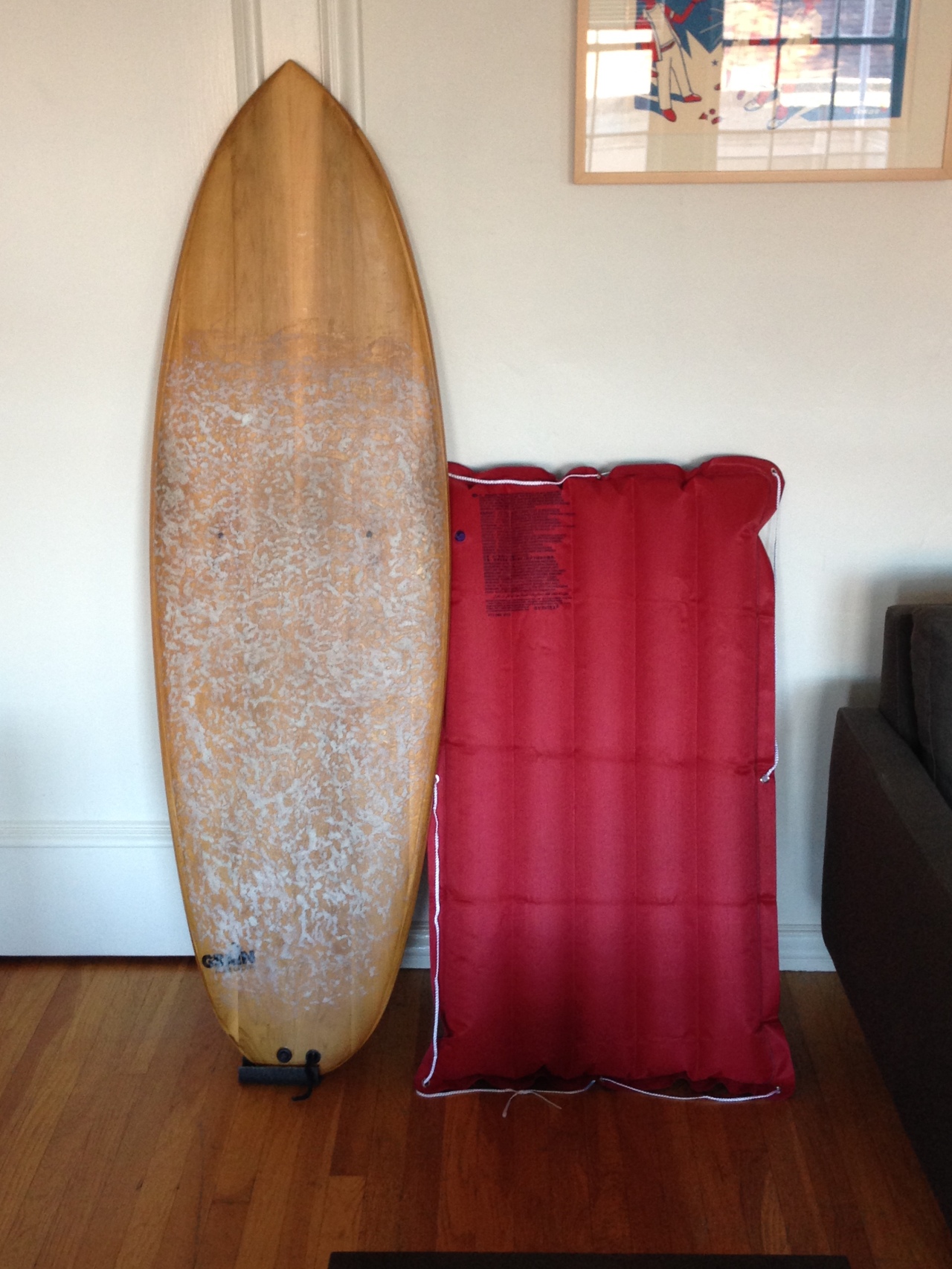I’m currently working on the wooden version of the Al Merrick and Rob Machado Channel Islands Biscuit. Having been completely satisfied with my first wooden surfboard, I went with another kit created by Grain Surfboards from York, Maine.

As a guide to others, I thought it would be helpful to post photos of the board while it’s still under construction. This is the second wood surfboard I’ve worked on, and I had many questions a long the way so hopefully these photos will help other shapers with their boards.
The first steps are easy to understand using the Grain builder’s manual. The first step is to set up the outer shape of your board (see above) by glueing the keel and ribs to the bottom plank. You’ll need (several) spring clamps, straps and a jigsaw. Nothing too hard yet…
The second task is forming the rails of the board. You’re going to need wood glue, a spokeshave, and as many clamps as you can get (I feel the more clamps you have the better). The rails are 1/4″ milled ceder and will follow the shape of your ribs. You’ll need to trim and steam the rails in order for them to take the shape.

Rail Strips
Use a spokeshave to trim the strips. A spokeshave is a fairly easy tool to for someone not too “handy” to use. As long as you take your time fitting the strips this step will not be too hard. It helps me (a person just starting to make surfboards) begin to understand the reasons boards are shaped the way they are.

"Railing" your board

Your rails
Keep in mind that I’m just highlighting some of the major steps in the building process, skipping many little steps as I go, so if you wanted to know more then just feel free to ask. And again, this is a Grain kit I’m following, they are the real pros.
More to come as I find the time to build…
share this with your Internet friends!























